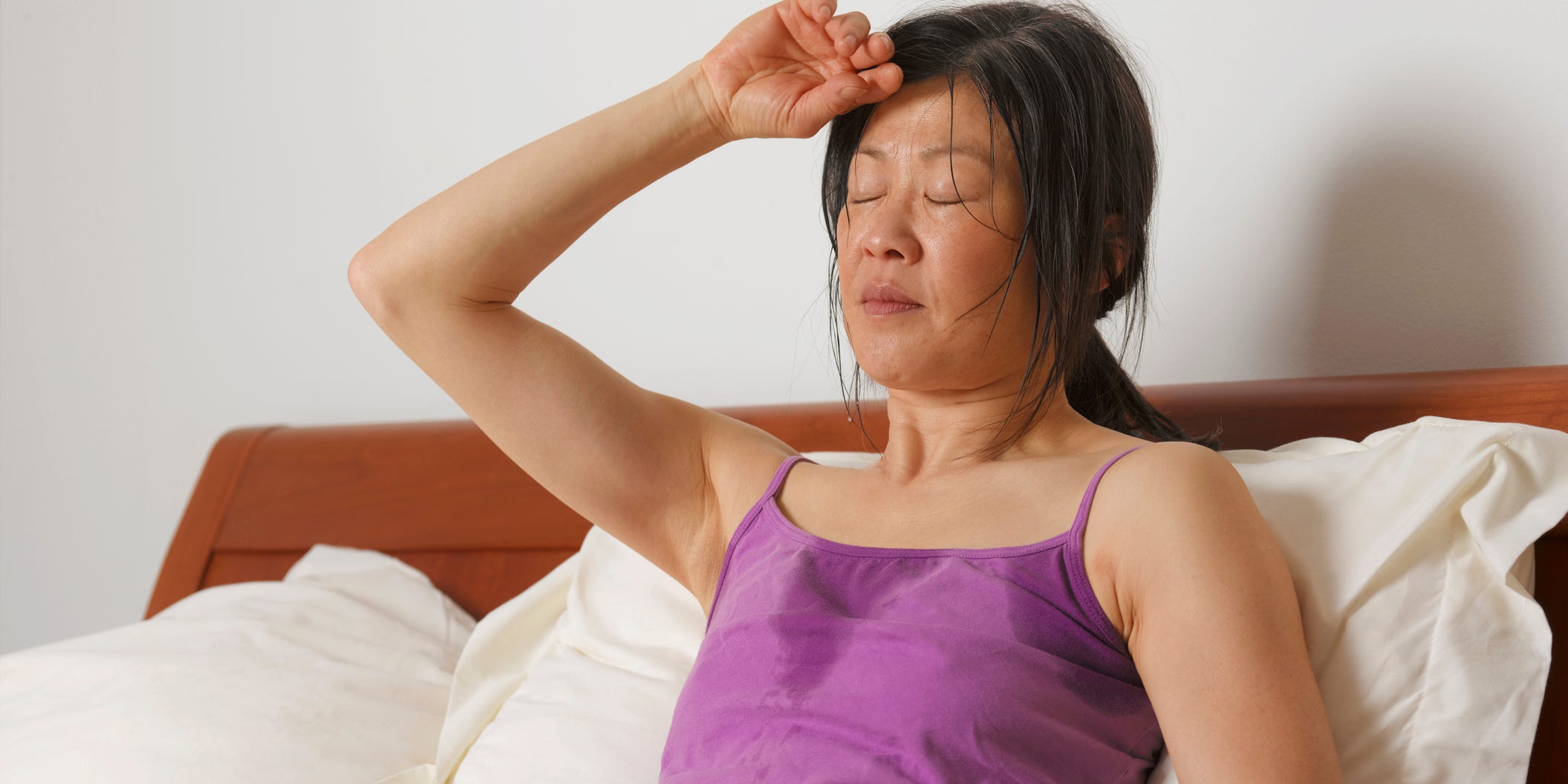
Peter Dazeley/Getty Images
- Making yourself sweat to break a fever won’t help, and it can also dehydrate you and deplete your energy.
- This myth may come from the fact that people tend to sweat as their fever is breaking, but this is because you naturally sweat as your body is trying to return to a normal temperature.
- You can treat a fever with painkillers, taking a lukewarm bath, drinking plenty of fluids, and resting as much as possible.
- Visit Insider’s Health Reference library for more advice.
If you’ve ever been sick with a fever, you may have been told to layer on blankets or go for a jog to try and “sweat out” the fever.
The theory is that sweating will help an illness leave your body more quickly, but experts say this isn’t the case. Making yourself sweat won’t help you get better any sooner. Instead, it can make you feel worse and may even make you sicker.
Here’s what you need to know about why you can’t sweat out a fever and some proven ways to treat a fever at home.
What is a fever?
You are considered to have a fever when your body temperature rises over 100.4°F. Many illnesses can cause a fever, like a common cold or the flu.
Your body runs a fever to try to fight off illness for two reasons:
- Viruses and bacteria may have a harder time living in your body when your temperature is higher.
- The increase in temperature activates your immune system, which stimulates your white blood cells to fight off the microbes causing the fever.
Why does your body sweat when you have a fever?
When you have a fever, you may notice that you'll start to sweat more than usual. This is actually your body's attempt to cool itself down using a method called cooling evaporation.
"The water droplets on the skin draw some of the heat from the body as they evaporate into the environment," says Troy Madsen, MD, a professor of emergency medicine at the University of Utah.
For this reason, your body naturally sweats when your body temperature rises. You also tend to sweat more when your fever breaks.
"A fever may continue to rise higher as the body is fighting infection, then drop as the infection subsides," Madsen says.
As a fever subsides, your brain stops signaling for your body to heat up and instead signals a return to your normal temperature. When this switch happens, you start to sweat more as your body tries to cool down.
People may mistake this to mean that sweating helps stop your fever, but in reality, you sweat because your fever is breaking, not the other way around.
Should you try to sweat out a fever?
Many believe that purposely increasing your body temperature and sweating more can help you heal faster from an illness. People tend to do this by layering on heavy clothes or blankets, or by exercising.
Unfortunately, this method doesn't work. "Sweating in response to the fever won't cause the fever to resolve more quickly," Madsen says.
This is because your body's main defense against a virus is your immune system, not a high temperature, Madsen says. And raising your temperature can make you feel even worse - you can develop unpleasant symptoms like headache, chills, and muscle aches.
"The fever plus the sweating may lead to quite a bit of discomfort, in addition to the pain and fatigue the body experiences with infection," Madsen says.
Another risk is dehydration, especially if you try to exercise. When you have a fever, your body loses fluids more quickly, so it's important to focus on taking in fluids, not sweating them out. Doing vigorous exercise to make yourself sweat can also worsen your illness and drain valuable energy your body needs to fight an infection.
How to treat a fever
If your fever is below 102°F and you aren't experiencing unpleasant symptoms like chills or body aches, then medication isn't always needed.
But for high fevers, a painkiller can help you find relief. "One approach I often recommend is alternating ibuprofen and acetaminophen every 3 to 4 hours," Madsen says. This keeps you from taking too much of either medication and avoids the spikes in fevers that you may have as one medication wears off, Madsen says.
Some other home remedies to help cool down a fever include:
- Putting on light clothes
- Taking a lukewarm bath
- Drinking plenty of fluids
- Rest as much as possible
In most cases, a fever is only dangerous and requires medical attention once it rises above 106 degrees F. But if your temperature rises over 103°F, or 100.4°F in an infant who is less than three months old, you should contact your doctor to make sure you don't have a serious infection.
Madsen also recommends seeing a doctor if you have certain symptoms, including:
- Difficulty breathing
- Lethargy
- Dehydration
- Severe abdominal pain
- Severe neck pain
- Red or warm rashes
- Burning with urination
"Most fevers should resolve within a few days," Madsen says. "Fevers which last longer than this also warrant a call to your physician."
Insider's takeaway
Trying to sweat out a fever won't help to bring down your fever or help you get over an illness more quickly. Instead, try taking fever-reducing medication, drinking fluids, and getting some rest. If you have any concerning symptoms, or your fever rises over 103 degrees F, contact your doctor as soon as possible.
Related stories from Health Reference:
- What causes a fever and when to seek medical attention
- How to break a fever and help alleviate your symptoms
- You're probably not washing your hands long enough, and it could be making you sick
- Vitamin C for the common cold is a myth, sort of
- Yes, the flu is contagious. Here's when you're most likely to spread the virus